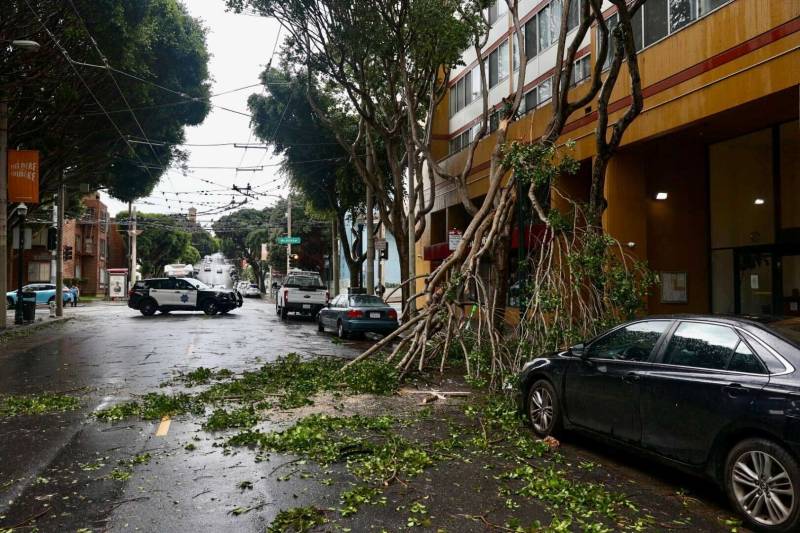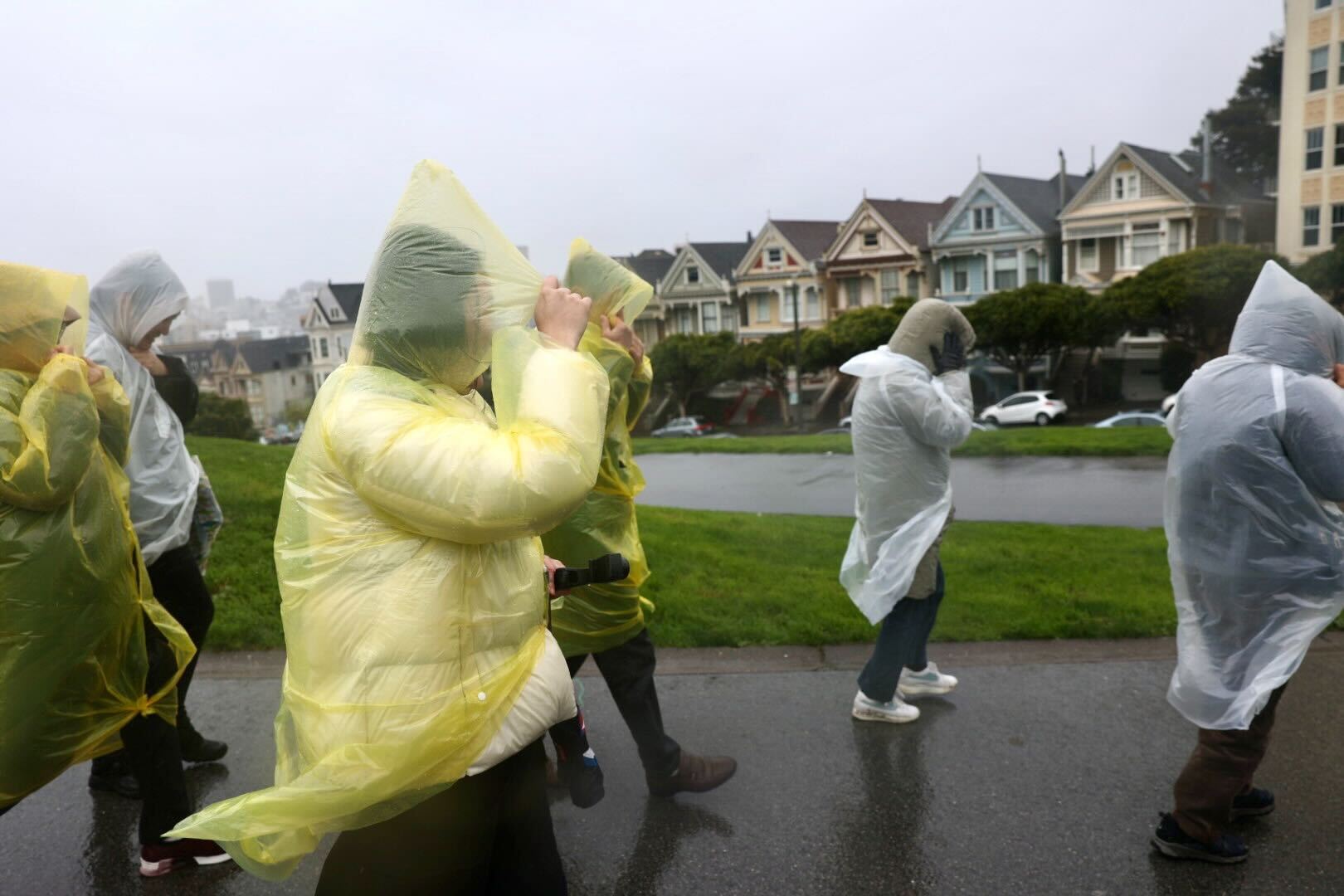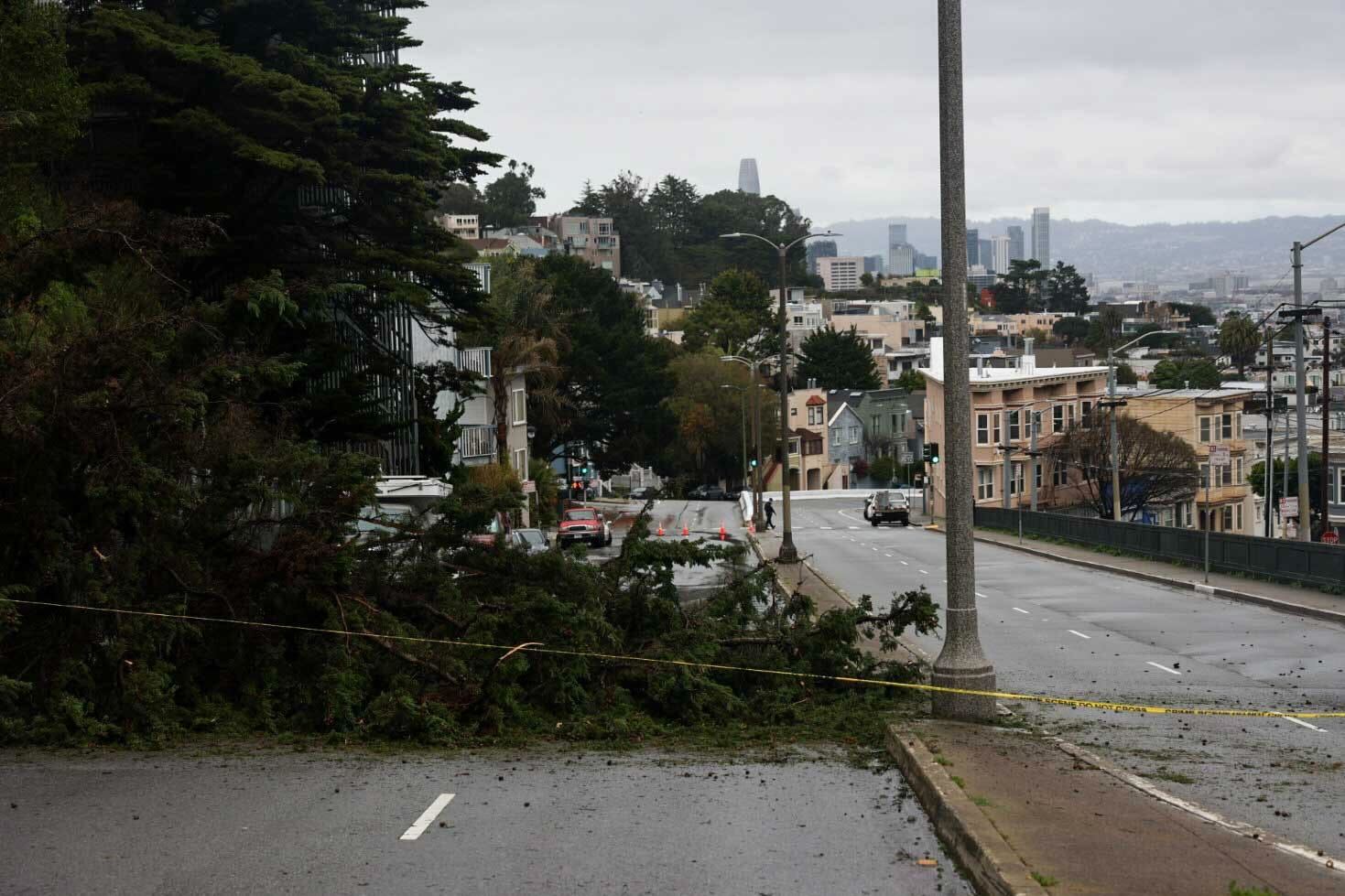Water officials in the South Bay said the worst of today’s storms have passed — without flooding along the Guadalupe River in San Jose, which city officials thought could overflow. Water levels reached above seven feet around noon but have since declined. That’s short of the 9-and-a-half feet the National Weather Service defines as flood stage for the river.
Valley Water spokesman Matt Keller says that’s good news for nearby residents.
“You know, if the forecast would have delivered what it was, they would have seen flooding in that area,” he said. “But because, you know, Mother Nature could do what Mother Nature does, it’s as much as we like to forecast, it can still be unpredictable. And, we did not see the impacts that we were expecting.”
The city of San José remains under a wind advisory with gusts expected up to 60 miles per hour.
Updated 4:30 p.m. Sunday
A community center in San José will remain open today for unhoused residents seeking shelter from the wet weather. The Roosevelt Community Center on Santa Clara Street will accept walk-ins today — with space for 90 individuals.
On Saturday, the city ordered an evacuation for unhoused residents living along the banks of the Guadalupe River, which ultimately avoided flooding. San José Mayor Matt Mahan says city police broadcast a message over a loudspeaker warning people to leave the river banks.
“It’s the most efficient tool we have for letting homeless residents living along the waterways know that there’s a risk and that they need to relocate,” he said.
After Saturday’s evacuation order, more than 40 people stayed at the Roosevelt Community Center.
“Right now, it’s just the wind that I’m keeping an eye on because we could have more trees and power lines down and more power outages,” Mahan said.
In Oakland on Sunday, Eugene Jacobs, who has been unhoused since 2017, tied a tarp over his tent under the 980 overpass at Sycamore St. The Oakland native said he lives in a tent just a few hundred feet away.
“My whole front door and back door have been torn off,’ he said. “It’s been hard to deal with, but as long as you stay under this underpass right here when you’re homeless, you stay dry.”
While the Bay Area is still experiencing the lingering wind and rain, much of the effects have yet to hit Southern California, but Swain says that will change as the day continues with flash flood warnings from Santa Barbara south.
“If you’re in Los Angeles and San Diego, you’re still saying ‘what storm?’ because it is essentially raining lightly on the west side of LA with partly cloudy conditions or sunny conditions relatively warm, east and south of that, but just wait, it is coming,” he said.
Original story



